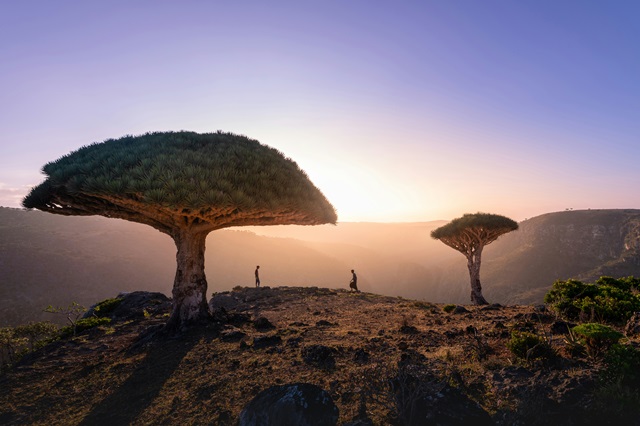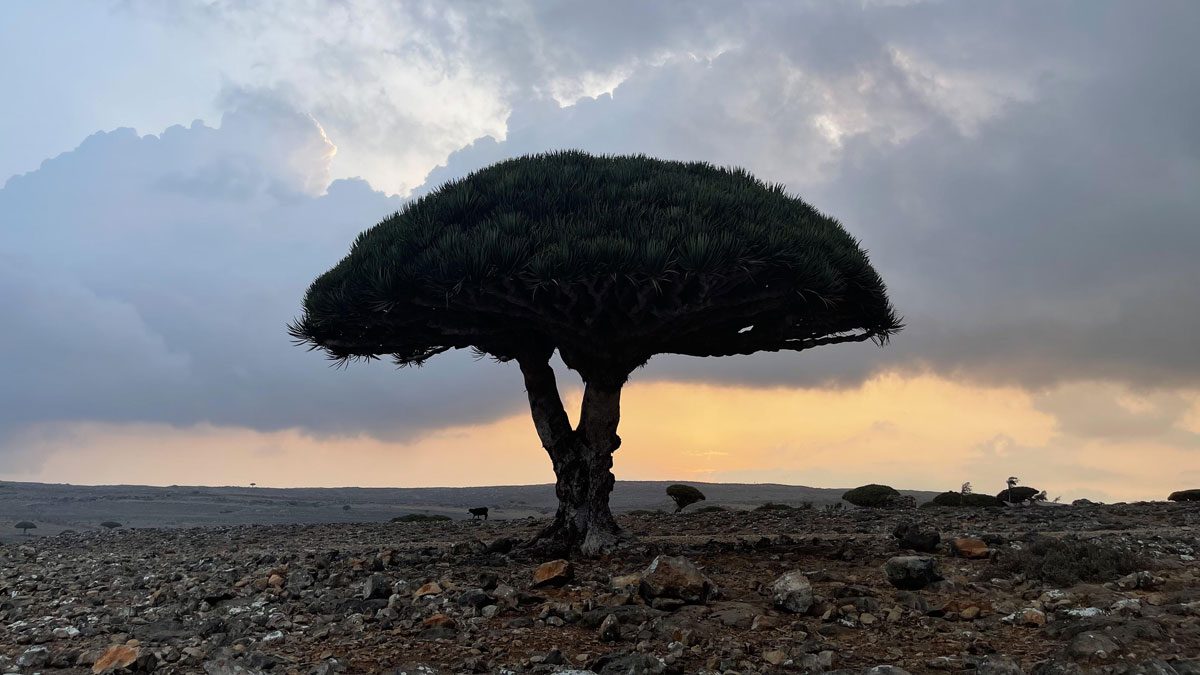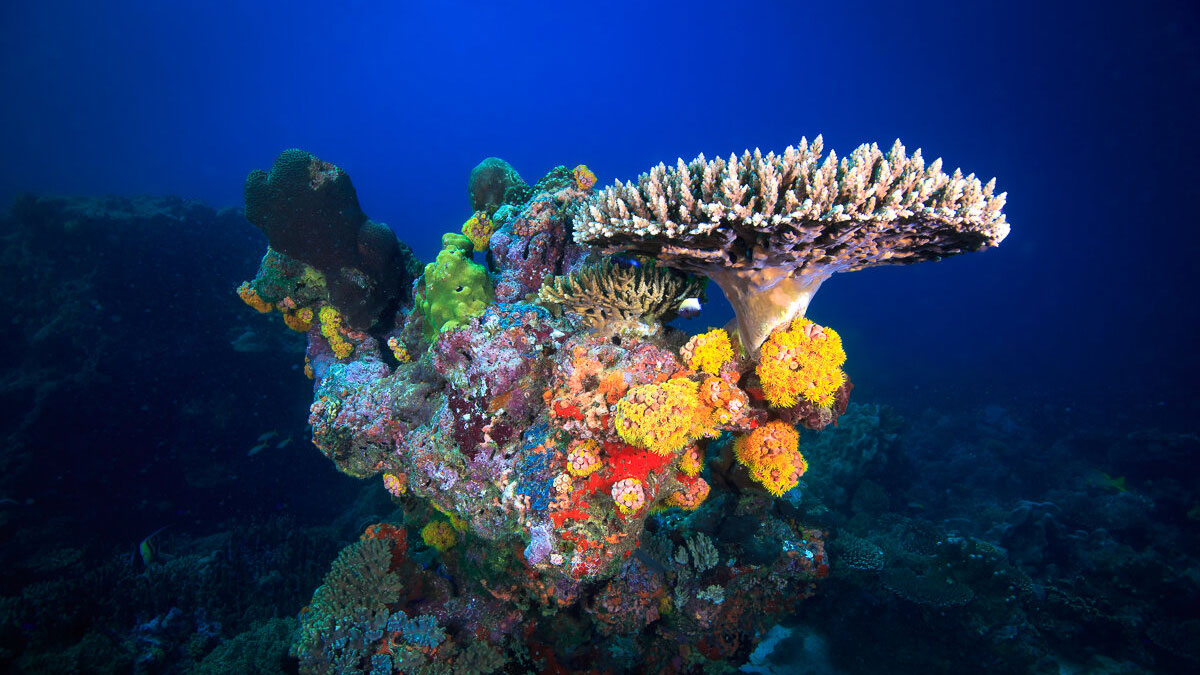What makes the Socotra dragon blood tree so unique among other plant species?
The Socotra dragon blood tree locally known as “the two brothers blood”, scientifically known as Dracaena cinnabari, is a rare and fascinating plant that can only be found on the remote island of Socotra, located in the Arabian Sea. With its unusual appearance and mythical name, this iconic tree has captured the attention of botanists, conservationists, and travelers alike. But what exactly sets this tree apart from others in the plant kingdom?

One of The Most Striking Features
One of the most striking features of the Socotra dragon blood tree is its distinctive shape, which resembles an umbrella or an upturned bottle brush. The tree’s trunk is stout and cylindrical, covered in a thick, reddish-brown bark that exudes a deep crimson sap when cut, giving rise to its dramatic name. This resinous sap, known as dragon’s blood (brothers blood), has been used for centuries in traditional medicine, dyes, and varnishes, adding to the tree’s mystique and allure. But how does this unique sap play a role in the tree’s survival in its harsh environment?
Despite its otherworldly appearance, the Socotra dragon blood tree is supremely adapted to its arid and rugged habitat on Socotra Island. The tree’s resinous sap acts as a protective barrier against insects, fungi, and browsing animals, helping it survive in the harsh conditions of its native range. In addition, the tree has evolved a deep root system to tap into underground water sources, allowing it to withstand long periods of drought and extreme temperatures.
Not Just Socotra Dragon Blood Tree
The Socotra dragon blood tree is not only a botanical wonder but also a symbol of biodiversity and conservation on Socotra Island. As a keystone species in the island’s fragile ecosystem, the tree plays a crucial role in providing habitat and food for a variety of endemic and endangered species, including birds, insects, and reptiles. Its presence also helps protect the island’s unique flora and fauna from invasive species and habitat destruction.
In Conclusion
The Socotra dragon blood tree stands as a living testament to the beauty and resilience of nature in the face of adversity. Its awe-inspiring presence on Socotra Island serves as a reminder of the importance of conservation and stewardship in preserving our planet’s precious biodiversity. As we continue to explore and appreciate the wonders of the natural world, let us also strive to protect and cherish these unique and irreplaceable treasures for future generations to enjoy.




